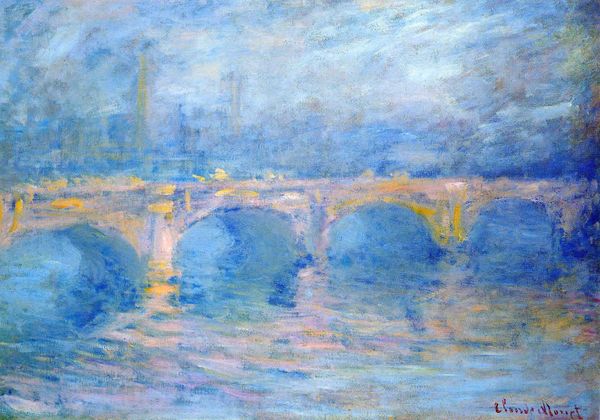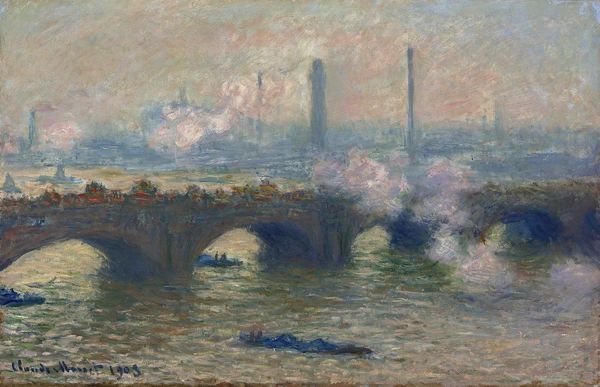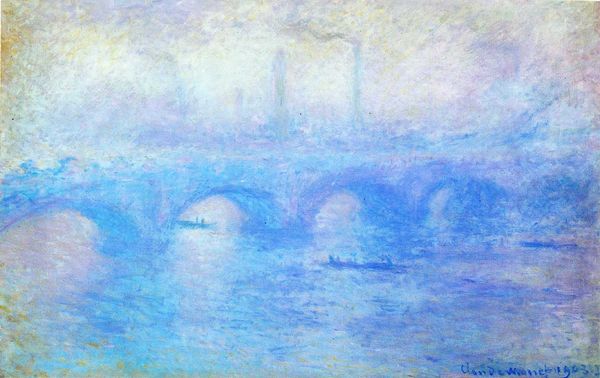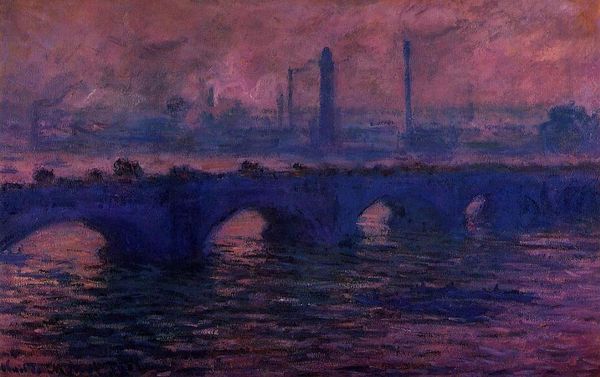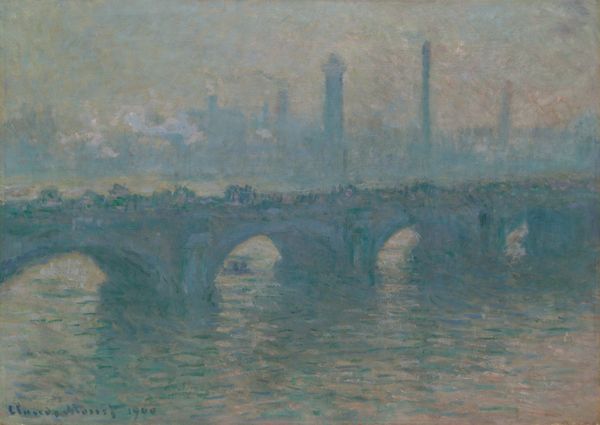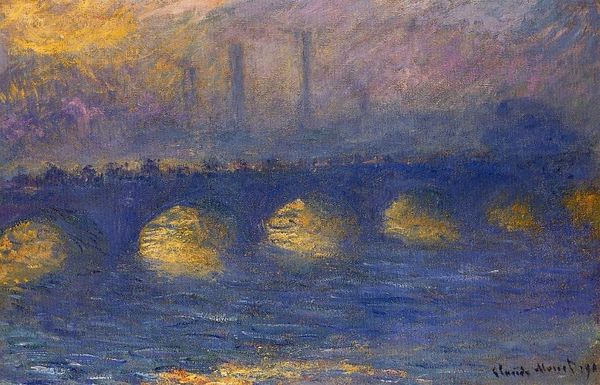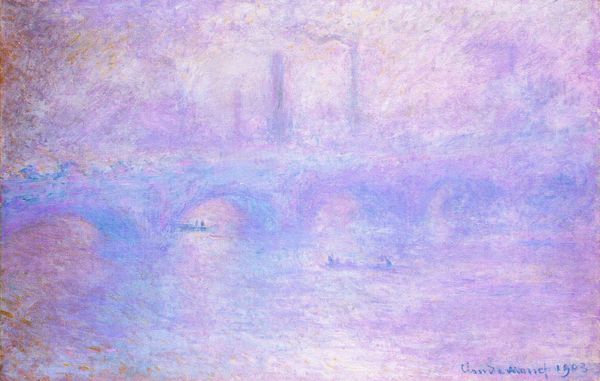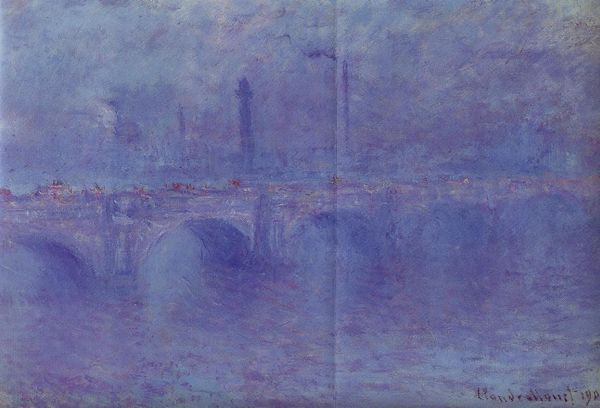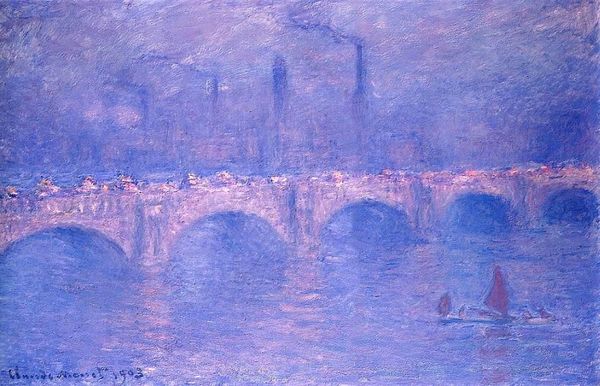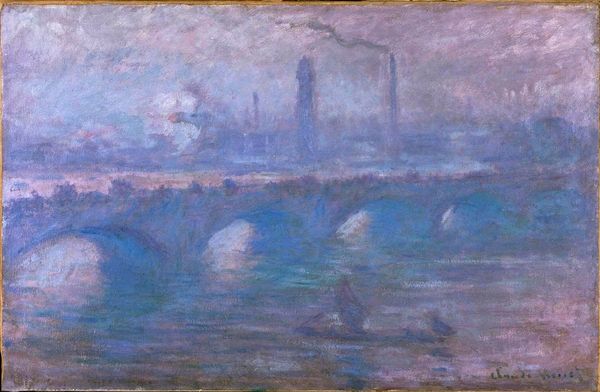
Copyright: Public domain
Editor: So, this is Claude Monet’s "Waterloo Bridge, Overcast Weather," painted in 1904. It’s an oil painting, part of a whole series he did of this bridge in different lights. It’s incredibly atmospheric; almost dreamy. What do you see in this piece? Curator: What I find fascinating here is the tension between the industrial symbols and the ethereal treatment. Those stark chimneys pumping smoke – blatant symbols of industry, power, and even pollution – are softened, almost dissolved, in the overall wash of color and light. Consider, why would Monet choose to depict the cost of progress bathed in a harmonious, albeit subdued, palette? Editor: Hmm, maybe he’s trying to show that even something ugly, like industrialization, can still be beautiful in a way? Curator: Perhaps. Or, consider this: is he presenting a lament, a longing for a pre-industrial idyllic past masked by aesthetic beauty? Are those softened edges a romanticisation, or are they a cautionary symbol hinting at something more profound beneath the surface, beyond the visible? Do the colors evoke specific emotional memories linked to London's industrial past? Editor: That’s interesting… It makes me think about how we often gloss over the negative impacts of progress. Curator: Indeed. Consider how those visual cues, the blurred lines, the diffused light, evoke shared cultural feelings regarding modernity. This tension between industry and artistic romanticism speaks volumes about our complex relationship with progress and memory. Editor: I never considered it that way, seeing beyond the beauty of Impressionism. Thanks for pointing out the weight of these symbols. Curator: And thank you for observing and sharing your thoughts, every brushstroke echoes cultural sentiments.
Comments
No comments
Be the first to comment and join the conversation on the ultimate creative platform.


